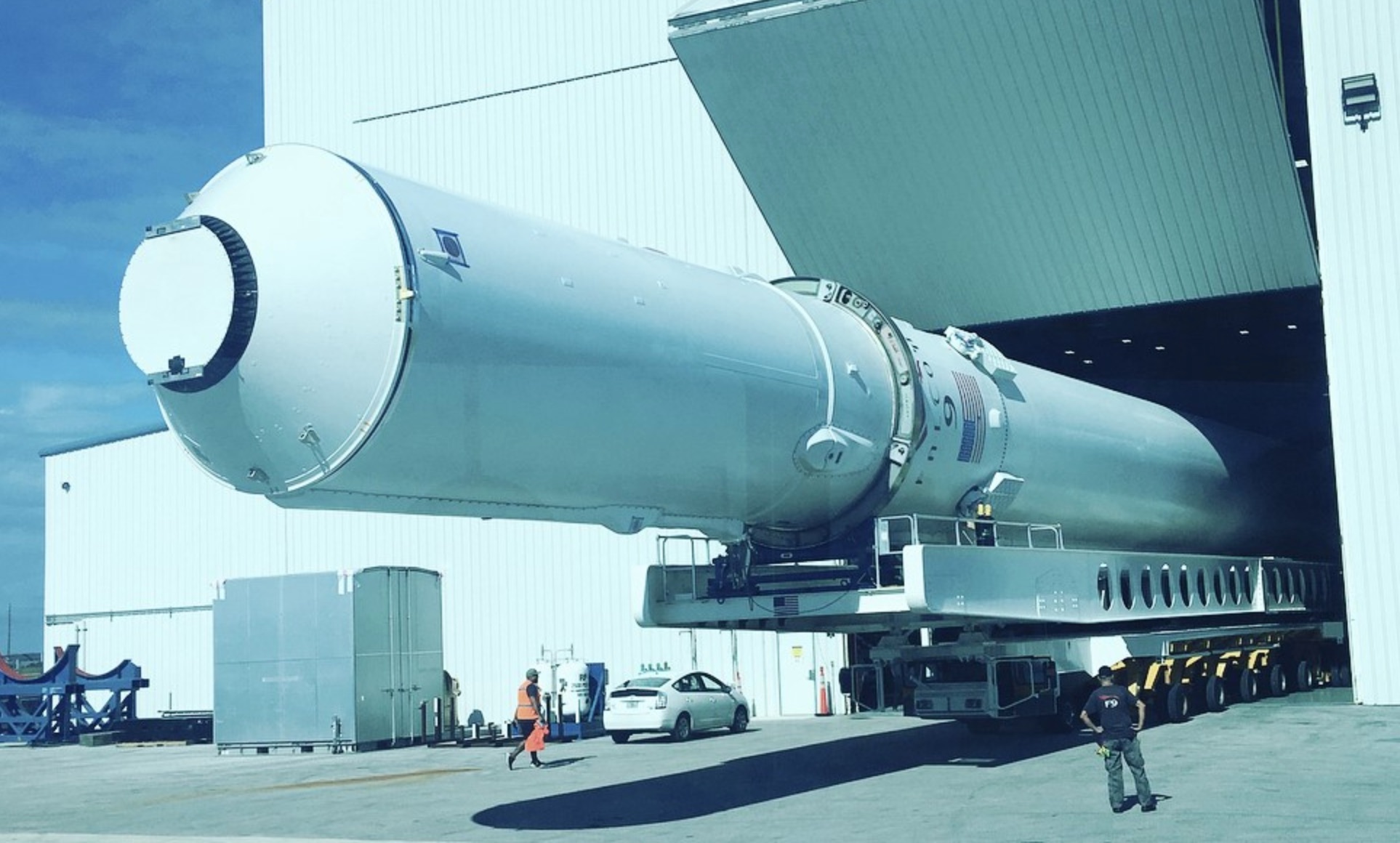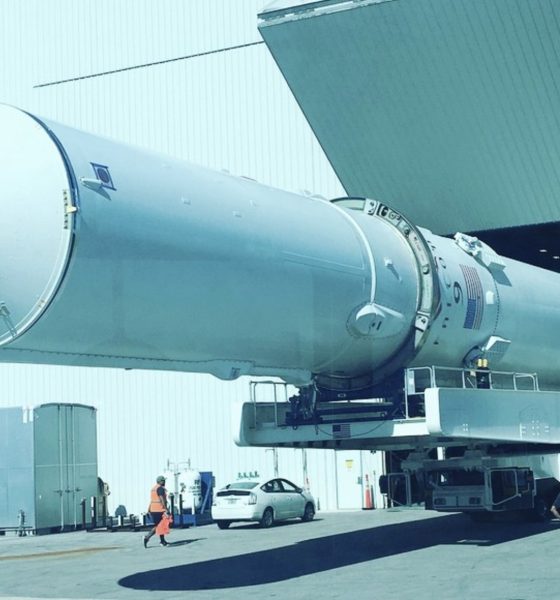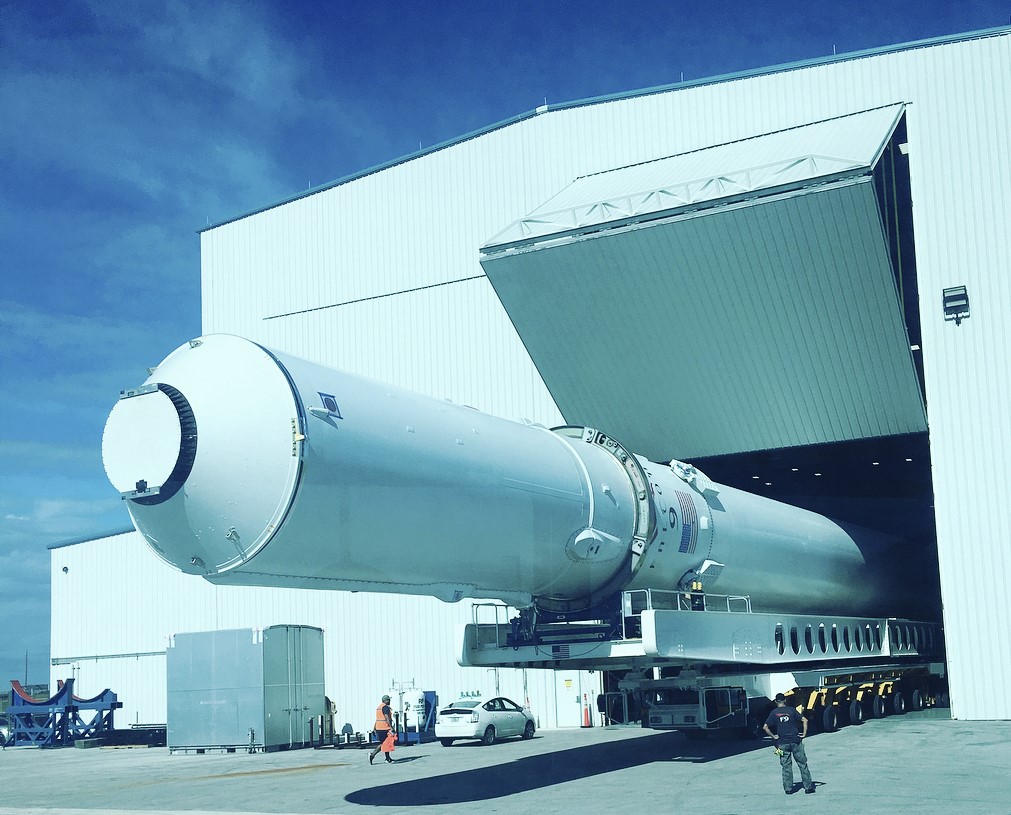

News
SpaceX’s mysterious Zuma mission ready for launch after fueling rehearsal
SpaceX’s Launch Complex-40 is nearly ready to host its second Falcon 9 launch since it was reactivated after extensive repairs and upgrades. The mission should be familiar: the Zuma payload SpaceX is tasked with launching was previously delayed in mid-November after the launch company discovered potential manufacturing defects in one or more of its carbon-composite payload fairings.
Still cloaked in intense secrecy, Zuma was originally rescheduled for liftoff on the evening of January 4th, but weather issues led SpaceX to recycle the launch to Friday, January 5th. Forecasts had initially looked promising, but weather changes and that may still be the case with the new Jan 5 date. Meanwhile, in the approximately two months separating Zuma’s present and first scheduled launch attempts, SpaceX has officially transferred all Falcon 9 launches to its newly reactivated LC-40 pad in order to free up LC-39A for Falcon Heavy’s inaugural launch attempt, currently NET January 15. Zuma’s Falcon 9 booster, number 1043, was in fact spotted being transferred from 39A’s integration facilities to LC-40 by a Kennedy Space Center tourist.

Zuma’s Falcon 9 spotted leaving 39A’s integration facilities on December 15. (Instagram /u/robhubar)
More recently, SpaceX announced that its launch team had conducted what is known as a wet dress rehearsal (WDR) with Falcon 9 1043, whereby the booster would be prepped and loaded with propellant as if it were preparing to conduct a static fire. This acts as a test of both the launch facility’s complex ground systems and the rocket’s functionality, at least short of actually igniting its nine Merlin 1D engines. It’s not entirely clear why SpaceX decided to conduct a WDR for Zuma, as the procedure is rather rare for the company, but the best explanation probably involves simple caution with a relatively untested and new launch pad, LC-40.
As of January 3, both SpaceX and CCAFS’ 45th Space Wing confirmed that the launch was now targeting January 5, with a window of opportunity from 8-10pm EST or 5-7PM PST. However, this date may also slip a day or two, hinted at by the 45th Space Wing’s “TBD” launch date for the mission. Nevertheless, the delay-beleaguered Zuma will presumably arrive soon at its unusual Earth orbit within the next several days.
Team at the Cape performed a propellant loading test of Falcon 9 on Pad 40 this morning – additional static fire test of the rocket was not necessary. Targeting January 5 launch of Zuma.
— SpaceX (@SpaceX) January 3, 2018
Unlike Iridium-4, which expended its flight-proven Falcon 9 first stage after liftoff, Zuma will be launching aboard a shiny, new Block 4 Falcon 9, and its boosters will attempt a recovery at SpaceX’s LZ-1 landing facility just a few miles away from LC-40. While it is entirely unclear how large the Zuma satellite(s) is/are, an LZ-1 landing essentially guarantees that it is relatively light and headed to a relatively low Earth orbit, meaning that the recovered 1043 will be a prime candidate for at least one additional reflight in its future.
Follow along on Instagram as our launch photographer Tom Cross covers SpaceX’s upcoming activities live from the Space Coast.

News
Tesla starts showing how FSD will change lives in Europe
Local officials tested the system on narrow country roads and were impressed by FSD’s smooth, human-like driving, with some calling the service a game-changer for everyday life in areas that are far from urban centers.

Tesla has launched Europe’s first public shuttle service using Full Self-Driving (Supervised) in the rural Eifelkreis Bitburg-Prüm region of Germany, demonstrating how the technology can restore independence and mobility for people who struggle with limited transport options.
Local officials tested the system on narrow country roads and were impressed by FSD’s smooth, human-like driving, with some calling the service a game-changer for everyday life in areas that are far from urban centers.
Officials see real impact on rural residents
Arzfeld Mayor Johannes Kuhl and District Administrator Andreas Kruppert personally tested the Tesla shuttle service. This allowed them to see just how well FSD navigated winding lanes and rural roads confidently. Kruppert said, “Autonomous driving sounds like science fiction to many, but we simply see here that it works totally well in rural regions too.” Kuhl, for his part, also noted that FSD “feels like a very experienced driver.”
The pilot complements the area’s “Citizen Bus” program, which provides on-demand rides for elderly residents who can no longer drive themselves. Tesla Europe shared a video of a demonstration of the service, highlighting how FSD gives people their freedom back, even in places where public transport is not as prevalent.
What the Ministry for Economic Affairs and Transport says
Rhineland-Palatinate’s Minister Daniela Schmitt supported the project, praising the collaboration that made this “first of its kind in Europe” possible. As per the ministry, the rural rollout for the service shows FSD’s potential beyond major cities, and it delivers tangible benefits like grocery runs, doctor visits, and social connections for isolated residents.
“Reliable and flexible mobility is especially vital in rural areas. With the launch of a shuttle service using self-driving vehicles (FSD supervised) by Tesla in the Eifelkreis Bitburg-Prüm, an innovative pilot project is now getting underway that complements local community bus services. It is the first project of its kind in Europe.
“The result is a real gain for rural mobility: greater accessibility, more flexibility and tangible benefits for everyday life. A strong signal for innovation, cooperation and future-oriented mobility beyond urban centers,” the ministry wrote in a LinkedIn post.
News
Tesla China quietly posts Robotaxi-related job listing
Tesla China is currently seeking a Low Voltage Electrical Engineer to work on circuit board design for the company’s autonomous vehicles.

Tesla has posted a new job listing in Shanghai explicitly tied to its Robotaxi program, fueling speculation that the company is preparing to launch its dedicated autonomous ride-hailing service in China.
As noted in the listing, Tesla China is currently seeking a Low Voltage Electrical Engineer to work on circuit board design for the company’s autonomous vehicles.
Robotaxi-specific role
The listing, which was shared on social media platform X by industry watcher @tslaming, suggested that Tesla China is looking to fill the role urgently. The job listing itself specifically mentions that the person hired for the role will be working on the Low Voltage Hardware team, which would design the circuit boards that would serve as the nervous system of the Robotaxi.
Key tasks for the role, as indicated in the job listing, include collaboration with PCB layout, firmware, mechanical, program management, and validation teams, among other responsibilities. The role is based in Shanghai.
China Robotaxi launch
China represents a massive potential market for robotaxis, with its dense urban centers and supportive policies in select cities. Tesla has limited permission to roll out FSD in the country, though despite this, its vehicles have been hailed as among the best in the market when it comes to autonomous features. So far, at least, it appears that China supports Tesla’s FSD and Robotaxi rollout.
This was hinted at in November, when Tesla brought the Cybercab to the 8th China International Import Expo (CIIE) in Shanghai, marking the first time that the autonomous two-seater was brought to the Asia-Pacific region. The vehicle, despite not having a release date in China, received a significant amount of interest among the event’s attendees.
Elon Musk
Elon Musk and Tesla AI Director share insights after empty driver seat Robotaxi rides
The executives’ unoccupied tests hint at the rapid progress of Tesla’s unsupervised Robotaxi efforts.

Tesla CEO Elon Musk and AI Director Ashok Elluswamy celebrated Christmas Eve by sharing personal experiences with Robotaxi vehicles that had no safety monitor or occupant in the driver’s seat. Musk described the system’s “perfect driving” around Austin, while Elluswamy posted video from the back seat, calling it “an amazing experience.”
The executives’ unoccupied tests hint at the rapid progress of Tesla’s unsupervised Robotaxi efforts.
Elon and Ashok’s firsthand Robotaxi insights
Prior to Musk and the Tesla AI Director’s posts, sightings of unmanned Teslas navigating public roads were widely shared on social media. One such vehicle was spotted in Austin, Texas, which Elon Musk acknowleged by stating that “Testing is underway with no occupants in the car.”
Based on his Christmas Eve post, Musk seemed to have tested an unmanned Tesla himself. “A Tesla with no safety monitor in the car and me sitting in the passenger seat took me all around Austin on Sunday with perfect driving,” Musk wrote in his post.
Elluswamy responded with a 2-minute video showing himself in the rear of an unmanned Tesla. The video featured the vehicle’s empty front seats, as well as its smooth handling through real-world traffic. He captioned his video with the words, “It’s an amazing experience!”
Towards Unsupervised operations
During an xAI Hackathon earlier this month, Elon Musk mentioned that Tesla owed be removing Safety Monitors from its Robotaxis in Austin in just three weeks. “Unsupervised is pretty much solved at this point. So there will be Tesla Robotaxis operating in Austin with no one in them. Not even anyone in the passenger seat in about three weeks,” he said. Musk echoed similar estimates at the 2025 Annual Shareholder Meeting and the Q3 2025 earnings call.
Considering the insights that were posted Musk and Elluswamy, it does appear that Tesla is working hard towards operating its Robotaxis with no safety monitors. This is quite impressive considering that the service was launched just earlier this year.








